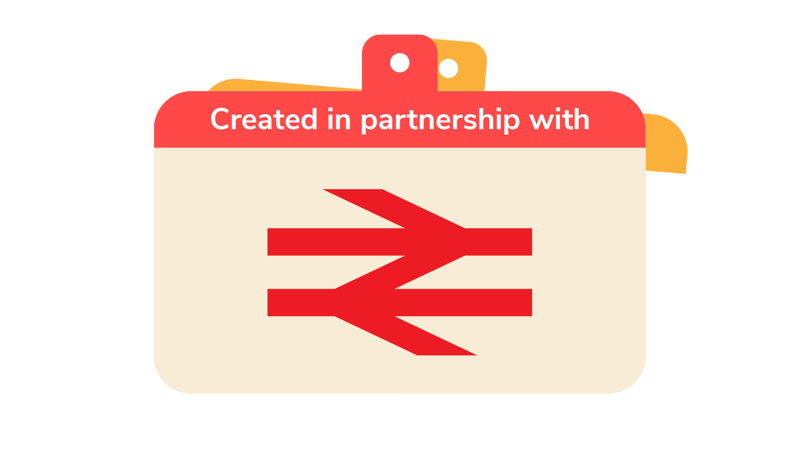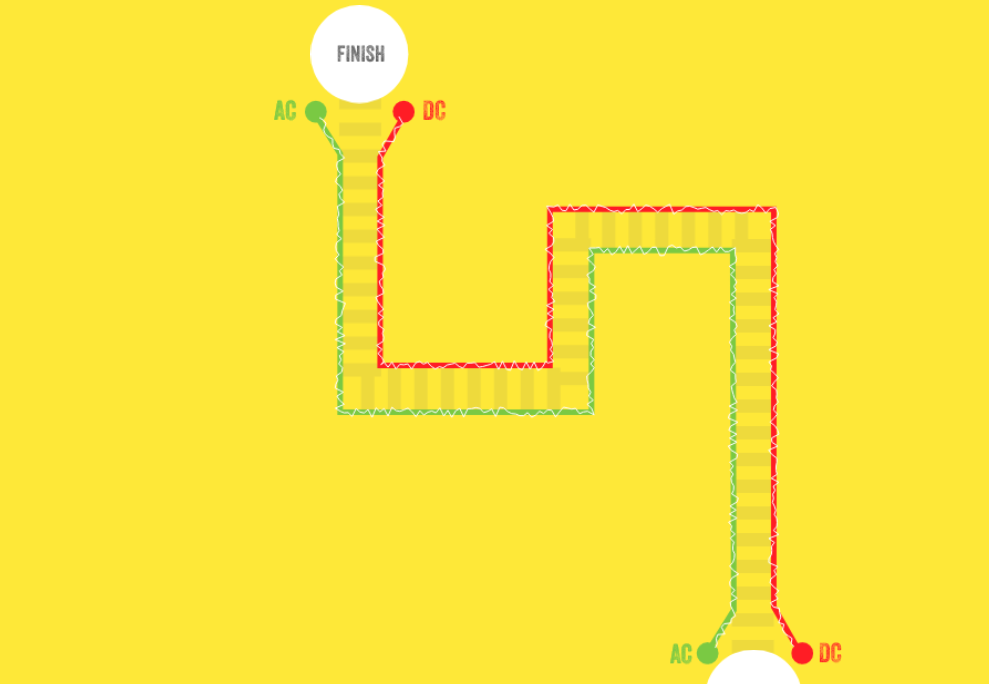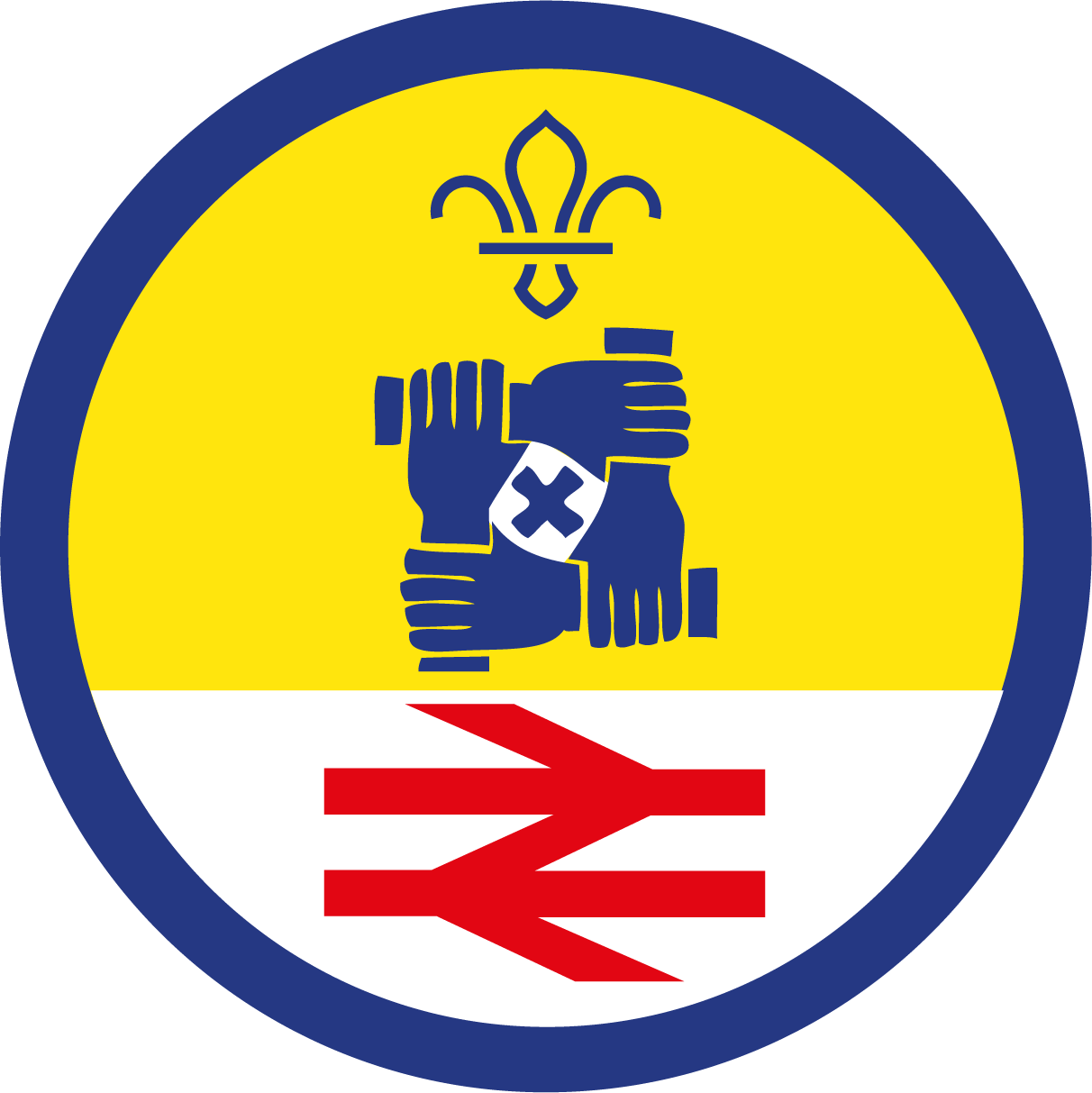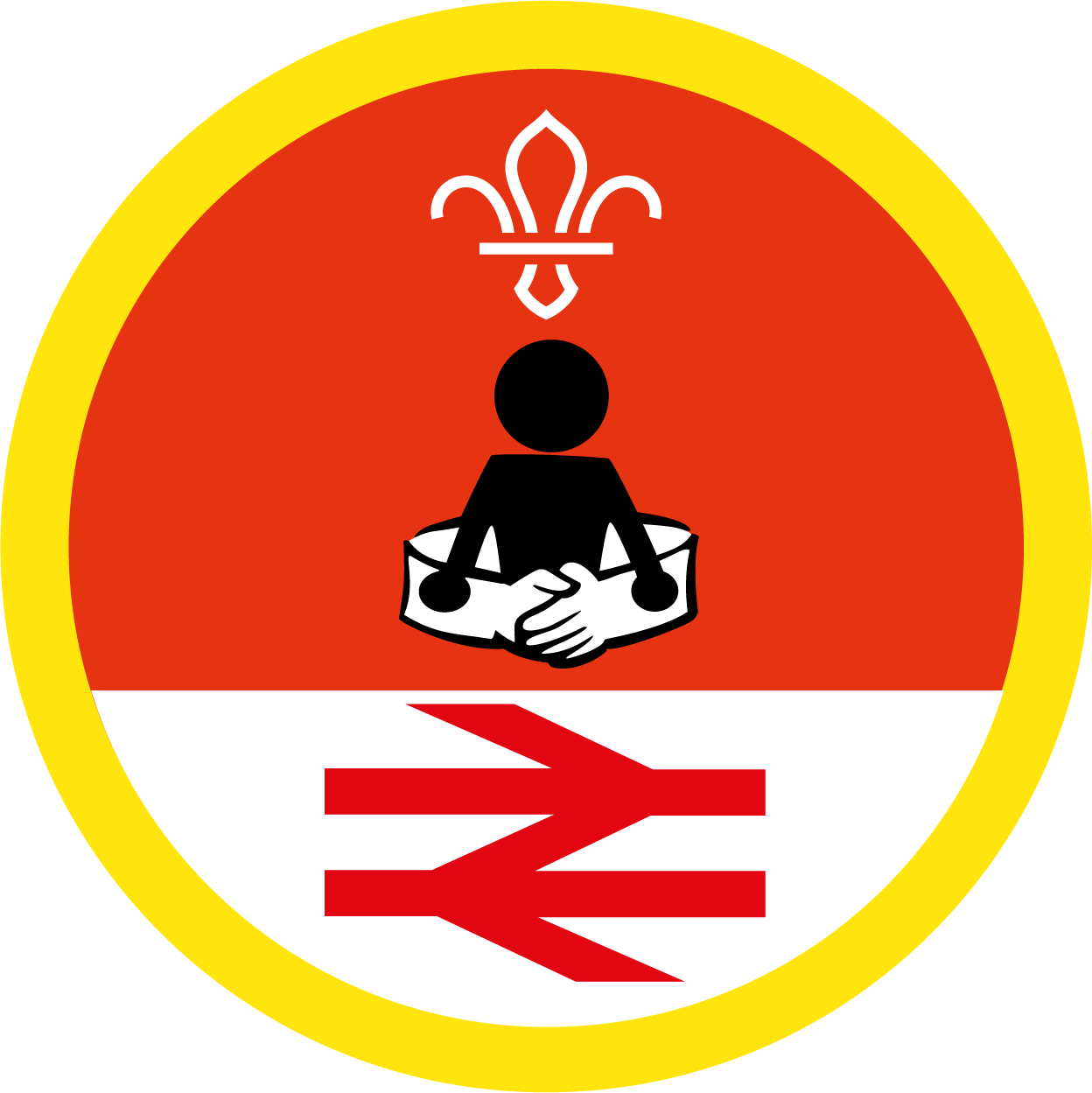
Try our train safety obstacle course
You’ll need
- Chalk, masking tape, cones or ropes to mark out the obstacle course
- Ball
- Obstacles for the path. Some suggestions include bean bags, balls of various sizes, building bricks or small wood planks.
Before you begin
- Use the safety checklist to help you plan and risk assess your activity. There's also more guidance to help you carry out your risk assessment, including examples. Don’t forget to make sure all young people and adults involved in the activity know how to take part safely.
Setting up the course
- Using chalk, masking tape, cones or ropes, make a pathway. It should be two lines, with enough space between the two lines for young people to be able to dribble a football down. This will be the course.
- One line will represent the alternating current (AC) and one line represent the direct current (DC).
- The course path can be as straight or curved as you think appropriate to your group.
- The course path can be as wide or narrow as you think the young people will be able to manoeuvre themselves and a ball through. Make sure you’re paying attention to the accessibility needs of your group and make the path accordingly.

Setting the Scene
- Gather everyone together to set the scene.
- Please share as much or as little of the detail, appropriate to you group, to help them understand the importance of staying away from railway lines and the impact it can have if you do touch them.
- Explain that there are two main electrical dangers on railways. These are the overhead lines alternating current (AC), and the third rail direct current (DC). It’s extremely important that we don’t touch the overhead lines or third rail at any time, as they can all cause life-changing damage to a human.
- For overhead lines, the alternating current (AC) is present in the overhead cables around the railway. The AC will often physically throw victims away from the lines and leave them with nasty injuries. AC can leave victims with life changing injuries, such as burns, scars, nerve and brain damage, as well as causing irreversible heart damage. You don’t have to touch the cables for the electricity to touch you. AC is volatile and can arc (jump) up to three metres away from the cables to reach you if you’re close enough.
- Third rail - Direct current (DC) will stop victims right in their tracks. DC can leave victims with life changing injuries like burns and scars, plus irreversible nerve, heart, and brain damage. DC is present in the third rail on the railway. When you touch anything with strong enough direct current, it will start to burn you in addition to causing strong muscle contractions which will make it impossible for you to stay away. This is why DC is known for ‘holding you’ in place.
- Please remember to reassure young people that if smart and safe, the railway is perfectly safe! This game doesn’t represent a real-life example, but instead should teach us about electricity at the railway in a fun, safe way.
Play the game
- Gather everyone together and explain that you’re going to play a game where you need to try to represent moving around a train station, while staying safe and avoiding the electricity.
- Ask everyone to get into teams. They should have a course for each team and a ball for each team.
- People should dribble the football through the course, not letting the ball or themselves touch the sides. Once they’re finished, they need to take the ball back to the next person then sit down to one side. You could demonstrate the course to everyone first, so people know what they’re doing.
- You could also use a smaller ball and a hockey stick for people to use to dribble the ball through, instead of a football.
- Someone should be making sure no-one touches the sides at any time and noting down any touches. Someone else should also be timing each group and writing down the times.
- Once everyone understands the objectives and the rules, the first person for each team can go through the course.
- At the end, you can tell everyone how many times each team touched the sides, without singingly anyone out. You can also reveal which team completed it the fastest.
- You could also treat each touch as a 5-second time penalty and add 5 seconds to the overall time. The fastest team could then win.
Reflection
This activity was all about learning about electricity at the railway. Have any of you ever gone to a railway before? How was the activity similar? How did it differ?
You can help keep others safe, too. If you see someone looking upset at the train station, tell a responsible adult, such as the grown up you’re with or someone who works at the train station. Never approach a stranger without a responsible adult.
Remember to remind the young people that this game doesn’t show a real-life example, but instead taught us how to keep safe in a fun way.
Railway stations and railway lines can be a very dangerous place if we’re not careful, but if you’re sensible and cautious, you’ll keep yourself safe.
The overhead cables that power trains carry 25,000 volts of electricity. This is 100 times stronger than your household electricity. Because it is always on, it’s easily the most dangerous aspect when trespassing.
The third rail is probably the hardest danger to see. It looks just like an ordinary rail, but it carries 750 volts, which is easily enough to kill you.
Every year people are killed while trespassing on the railway. We must never step onto the tracks. Lines may be electrified, and trains can approach at speed. Does anyone know ways we can keep safe at a railway station and near railway lines?
Some things we can do are:
- Never trespass on a railway. It’s illegal. Trespassing includes stepping off a level crossing onto an area where you shouldn’t be, picking up lost property from the tracks, crossing the tracks at any point other than at a level crossing or taking a walk down the side of the railway track
- Keep away from the platform edge. Stay behind the marked yellow/white platform edge lines whilst waiting on the platforms.
- Make sure you apply the brakes to prams and strollers, and always position them parallel to the tracks.
- Always walk around a train station, never run.
- Hold the handrail and concentrate on your footing.
- Keep yourselves and others safe by reporting any unusual items or activity on the railway.
- Take extra care getting on and off a train and mind the gap.
- Never go near the overhead power lines.
- Never play on or near the train tracks, including never walking on or near them.
- Never throw anything onto the tracks or at the lines.
- Wait at and use level crossings to cross railways, following the signs.
- Stay with your grown up at the station.
- Never pick up or rescue anything from the tracks or near them, even if you dropped it. If you drop something on the track, leave it and contact a member of staff.
If you have never been to a railway before, has this helped you feel more confident in what to expect? Is there anything you are nervous about?
Allow the young people to share personal stories and feelings to make sure everyone feels prepared and reassured that they can tackle the railway safely and confidently!
Safety
All activities must be safely managed. You must complete a thorough risk assessment and take appropriate steps to reduce risk. Use the safety checklist to help you plan and risk assess your activity. Always get approval for the activity, and have suitable supervision and an InTouch process.
- Active games
The game area should be free of hazards. Explain the rules of the game clearly and have a clear way to communicate that the game must stop when needed. Take a look at our guidance on running active games safely.
You could make the path harder or easier, depending on the group. You may want to add in some extra obstacles, such as cones.
- Make sure there’s a role for everyone. If anyone doesn’t want to play the game, they can take on another role, such as scorekeeping or reminding people of the instructions throughout the game.
- People could work in pairs if someone doesn’t want to do the activity independently or if someone may need more support by working together to take part. If someone might struggle with making decisions, their partner could then help them. If needed, let people be in bigger groups to make sure everyone’s supported in taking part in the activity. A young leader could join a group to help people to take part, too.
- People who struggle with making choices could find all the options a bit overwhelming, so they might need extra support. They might want to work with a friend, young leader or volunteer to be able to help to decide.
- Make sure to break information up into smaller 'chunks' so no one feels overwhelmed.
- Take time and have patience while telling everyone what to do. Give short instructions clearly and concisely. If you need to, pause, then repeat the same instruction using the same words. You should allow extra 'thinking' time for some people to process verbal or written information and respond.
- Check for understanding by asking the group questions, such as ‘what do you need to do first?’ or having a practice round of a game. If people are struggling to understand or know what to do, you could let any confident young people help explain to each other what to do.
- For anyone who may not be able to move around your meeting place easily, think about how you set up the obstacle course to meet everyone' needs.
- For anyone who may not be able to hear the instructions or activity, consider printing them a version that they can read at the same time.
- Remember some people, including autistic people, might not look at you while you’re speaking. This doesn’t mean they're not listening. Eye contact can be painful for some people and shouldn't be forced.
- Try to build movement breaks into your activities to help people who may struggling sitting and listening for long periods.
All Scout activities should be inclusive and accessible.
Try some other activities to continue learning about rail safety.

